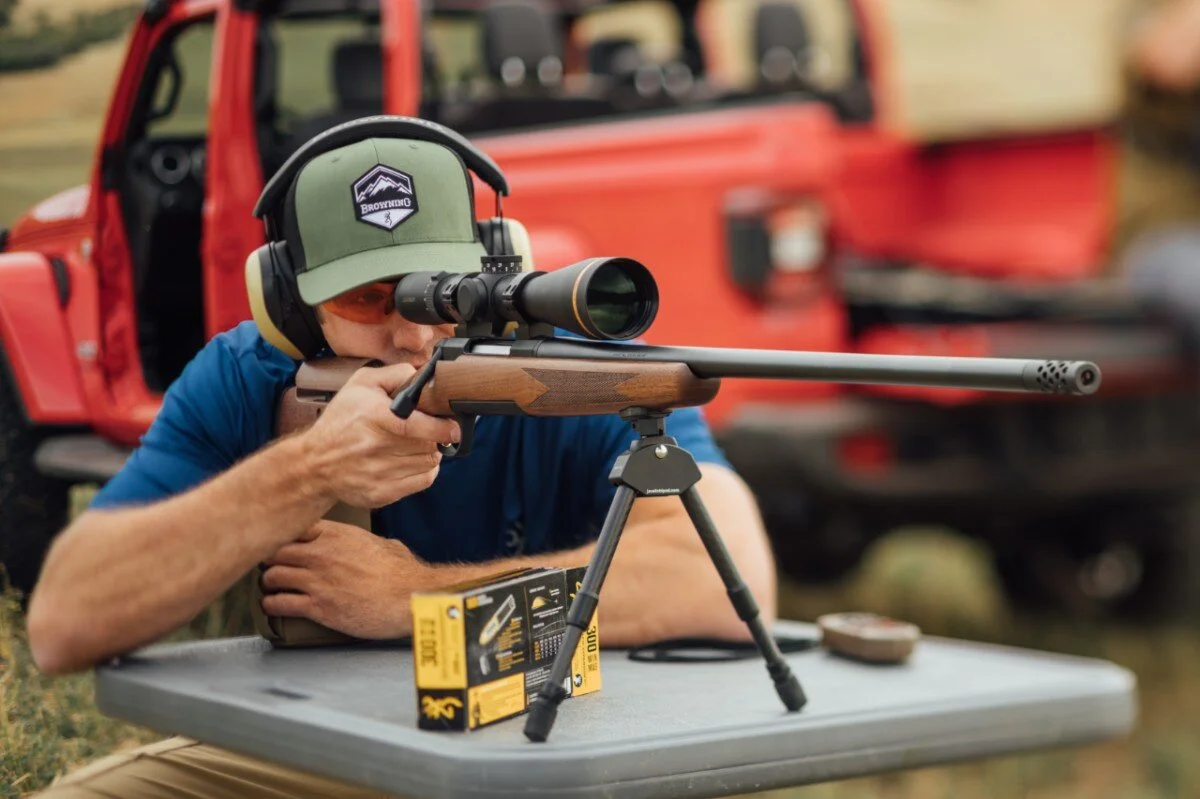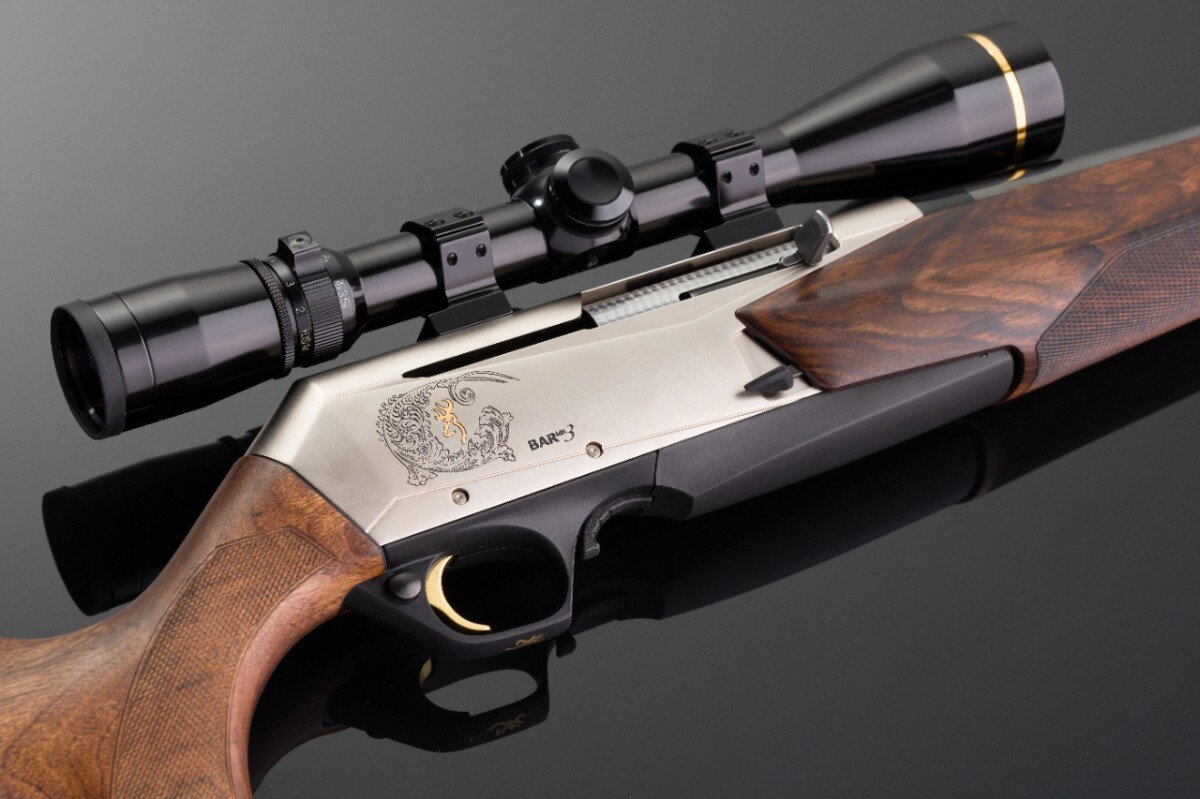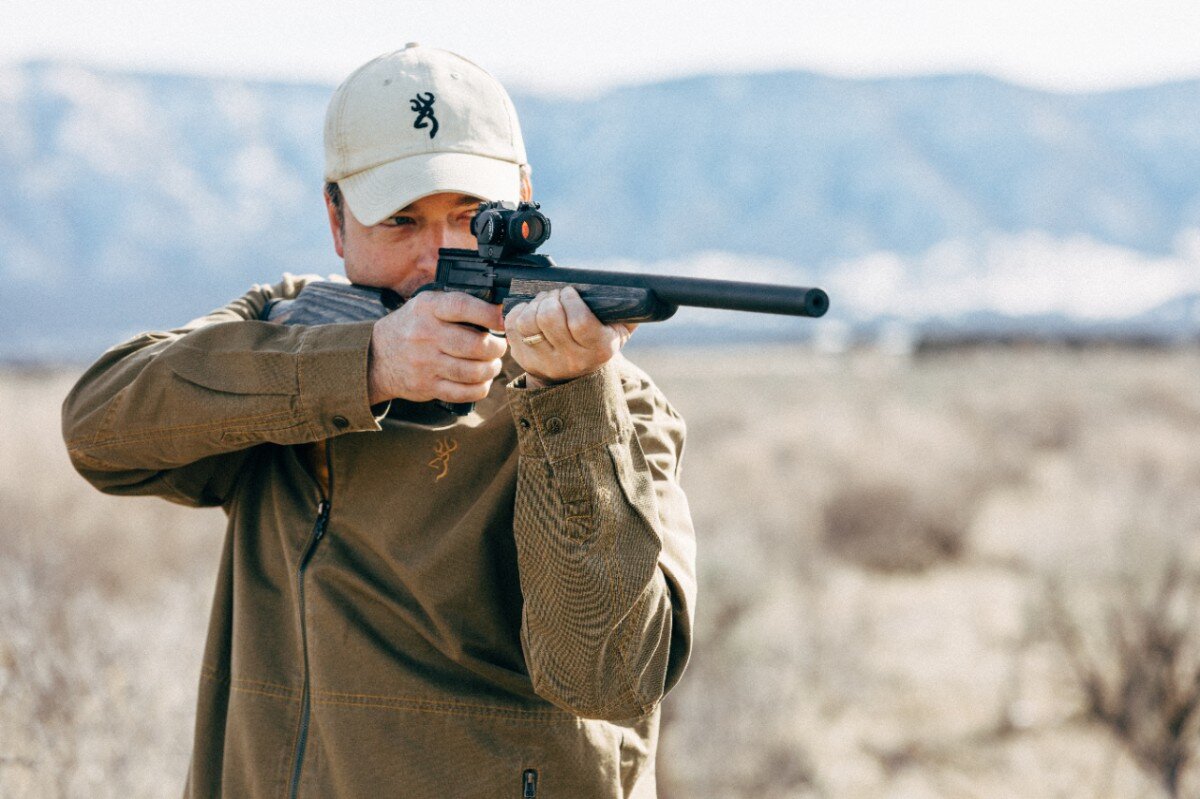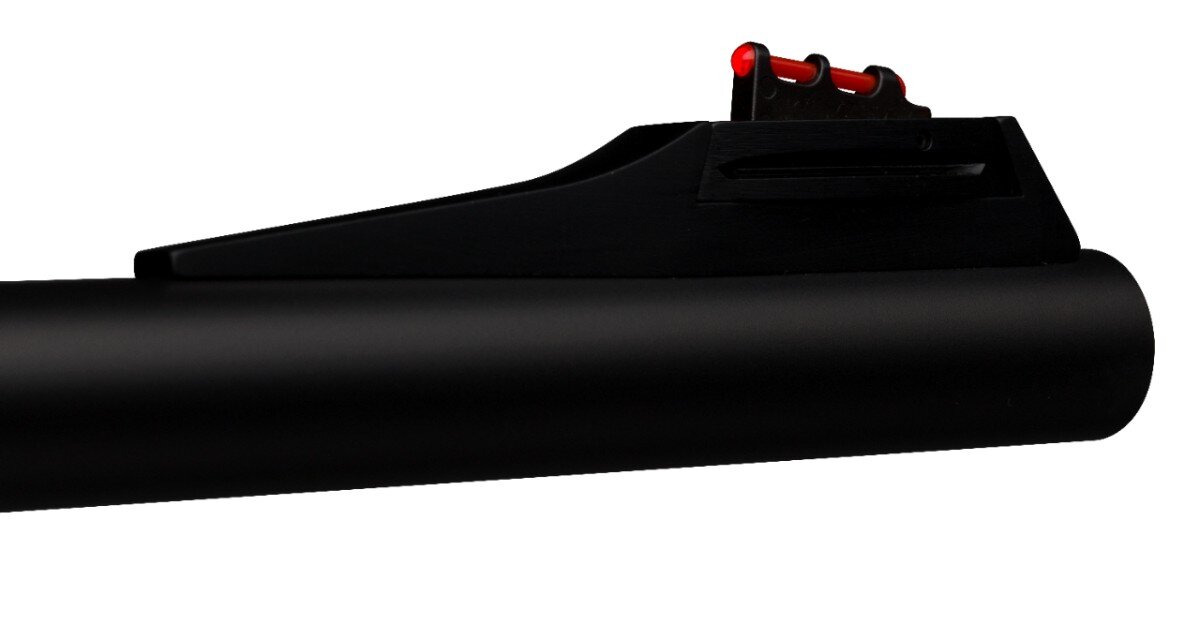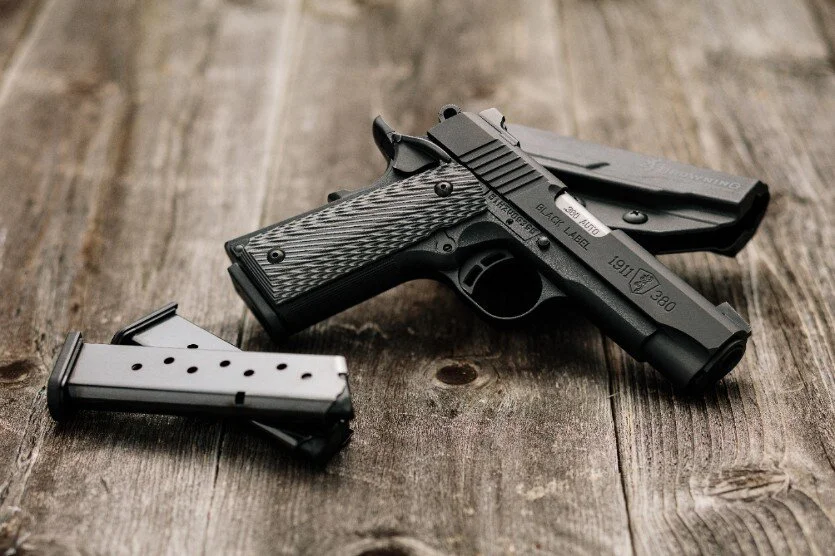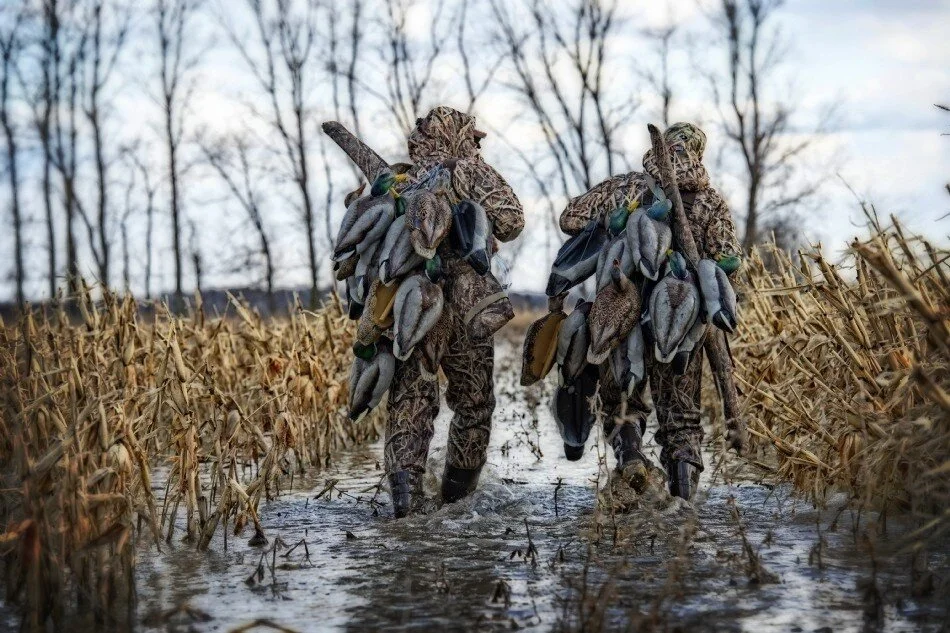5 Tips for First-time Rifle Buyers
Based on an article originally written for and posted by www.browning.com. Paraphrased and reposted with permission.
Firearm ownership is becoming increasingly sought out as hunting rises in popularity. But for first-time gun owners who may not have grown up around firearms, it can be a daunting decision. If this is you, we’d like to welcome you into the community of gun owners with this brief overview which is intended to help give you some direction. As Browning notes, “Always seek out other resources, such as certified training, gun store experts and excellent online resources from the National Shooting Sports Foundation (NSSF) and the National Rifle Association (NRA). And always read and understand all information contained in any firearms owner's manual.” Let’s get started.
Pick An Action You Are Comfortable With
cartridges
Browning’s overview notes that there are several different types of rifles available and begins by noting the two main cartridge distinctions: Centerfire and Rimfire.
“For starters, centerfire rifles generally utilize cartridges that are suitable for hunting and are effective at distances of several hundred yards. In general, larger caliber centerfire rifle cartridges offer greater range and bullet penetration, but also have more recoil than smaller caliber rifles. For most larger calibers, when they are fired there is a substantial force or recoil against your shoulder. If you have never shot a centerfire rifle before, visit a range and ask for assistance in taking your first shots. Larger, magnum calibers can present a very large recoil and be more difficult for smaller shooters.
Rimfire rifles use cartridges that are perfect for target shooting, plinking and training, and are also effective for small game hunting at distances of perhaps 100 yards or less. Be aware that a rifle bullet can ultimately travel several times the effective distances mentioned here.”
bolt-action rifles
Bolt-action rifles are favored in the hunting community for their reliability and accuracy, particularly for game such as deer, antelope, wild sheep, and elk. With less moving parts, the chances of having a malfunction in the field are decreased significantly, an important factor when you’ve rucked 6 miles into the Montana back-country.
Courtesy of Browning | 2020
“[Bolt-action rifles] are simple, rugged firearms that offer reliability and accuracy. ”
Browning gives a brief look at the straightforward operation of a bolt action:
“To use a Browning bolt-action rifle, place the "safety" in the on safe position and open the action by pressing the bolt unlock button. Lift upward on the bolt handle and pull the bolt fully to the rear. Remove the box magazine from the bottom of the rifle and insert one or more cartridges into it. Reinsert the magazine, push the bolt handle forward and down. Make sure the “safety” is still in the “on safe” position.
When you move the “safety” to the off safe position the rifle is ready to fire one cartridge when the trigger is pulled. You then manually lift the bolt handle and pull the bolt to the rear, ejecting the fired case. Pushing the bolt handle forward and down moves a fresh cartridge from the magazine into the chamber, where it is ready to fire with the next pull of the trigger.
Courtesy of Browning Firearms | 2020
“Remember, with a bolt-action rifle you must manually cycle the action after each shot to load another cartridge. Unlike most bolt-action rifles, the Browning T-Bolt utilizes a straight-pull bolt design.”
Bolt-action rifles come in both centerfire and rimfire variations, so make sure you familiarize yourself with what ammunition will match the gun you are looking to purchase.
autoloading rifles
Autoloading rifles (or “semi-automatic” as they are commonly known) require no manual operation of the action. They utilize the recoil energy to eject the spent cartridge and load another, allowing for faster follow-up shots. This type of rifle is great for hunting dangerous game such as bears, wolves, mountain lions, wild boar, and coyotes, but it’s also not uncommon for elk or deer hunters to carry one.
Browning BAR | Courtesy of Browning Firearms | 2020
According to Browning, they “currently have one centerfire autoloading rifle in the line called the BAR. (Today's BAR is a sporting rifle, and it is not based on the the military BAR originally designed by John M. Browning during World War I.)” Browning also notes that the BAR “has excellent accuracy for normal hunting ranges, but bolt actions are still the go-to for very long-range targets.”
“John M. Browning pioneered the autoloading firearm more than a century ago. Today’s Browning BAR centerfire sporting rifles are rugged, reliable, accurate and magnum-cartridge capable.”
Here is an overview of an autoloading rifle’s operation from Browning:
“To use a Browning autoloading rifle, first place the “safety” in the on safe position. Pull back on the operating handle and lock it to the rear. Remove the box magazine from the bottom of the rifle and insert one or more cartridges. Reinsert the magazine, activate the bolt release and let the bolt travel forward under the pressure of the recoil spring. Verify the “safety” is still in the on safe position.
When you are ready to fire, move the “safety” to the off safe position. The gun will fire one cartridge when the trigger is pulled. The gases from the fired cartridge instantly operate the bolt, eject the fired case and load a fresh cartridge from the magazine into the chamber. You’re now ready to fire the next shot with just the pull of the trigger. When you are finished shooting, place the “safety” back in the on safe position.
The advantage of the autoloading rifle is the ability to provide quick follow-up shots. Be aware that autoloading rifles tend to be more sensitive to the type of ammunition used to ensure the most reliable operation.”
Browning Buck Mark Rifle | Courtesy of Browning Firearms | 2020
Browning currently produces 2 rimfire autoloading rifles, “the SA-22 (originally designed by John M. Browning himself) and the Buck Mark rifle (similar to the Buck Mark pistol but in a rifle configuration).”
“ The Browning Buck Mark is a rimfire rifle ideal for small game hunting and uses the same magazine as the popular Buck Mark pistols. The classic SA-22 has an internal magazine.”
lever-action rifles
One of the most iconic rifle models is the lever-action, immediately conjuring up images of John Wayne facing down outlaws in a John Ford film. Browning describes the rifle model below:
“Lever-actions were among the first repeating rifles, and the basic design dates back to the mid-1800s. These guns have a single barrel and a manually-operated lever that ejects the fired case, cocks the hammer and loads a fresh cartridge from the magazine. Some lever-actions, like the Browning BLR centerfire rifle, use a detachable box magazine. Most other lever-action designs, like our BL-22 rimfire rifle, use a tubular magazine located under the barrel.
Browning BL-22 | Courtesy of Browning Firearms | 2020
“The operation of a lever-action is quite simple. If the rifle is equipped with a “safety” it is placed in the on safe position. The detachable magazine on the BLR is removed and loaded with cartridges. Otherwise, the cartridges are inserted one-by-one into the rifle’s tubular magazine. The lever is pushed fully down and then returned to the closed position. When the “safety” is moved to the off safe position the rifle will fire one cartridge when the trigger is pulled. The lever is operated again and the rifle is then ready to fire another cartridge. Remember that the lever must be operated manually prior to each shot.”
“Browning BLR centerfire rifles are easy to carry, accurate and reliable. The Browning BL-22 rimfire rifle is perfect for plinking and small game.”
Below are some differences in operation between the BLR and the BL-22 as laid out by Browning.
BLR Lever Action. Like many lever-action rifles with exposed hammers, the BLR does not have a separate manual safety. However, the BLR has a folding hammer feature which provides an added measure of safety when the hammer is at half-cock. The exposed hammer itself can be an excellent indicator of the safety status of the rifle. The folding hammer has four basic positions: The full-cock position, the half-cock position, the folded hammer position, and the dropped or fired position. An explanation of each position follows.
BL-22 Lever Action. Like many lever-action rifles with an exposed hammer, the BL-22 does not have a separate manual “safety.” While you should never rely on the dropped hammer position to function as a “safety,” the exposed hammer itself is an ideal safety status indicator since it alerts you when the rifle is cocked and ready-to-fire or when the hammer is in its dropped position. The hammer has three positions: Full-cock, half-cock, and dropped or fired.
2. There’s Lots to be Said for the 22 LR Rimfire Cartridge
One of the best ways to learn the fundamentals of shooting is with a .22, as laid out here by Browning:
Courtesy of Browning Firearms | 2020
“The .22 Long Rifle Cartridge can be ideal for your first rifle. Ammunition is lightweight, inexpensive and readily available. The recoil and noise of a rimfire are less intimidating for new shooters. You can easily carry a box of 100 rimfire cartridges in your pocket or pack and they won’t take up any more space than a candy bar.
Rimfire ammunition comes in many different styles, ranging from high velocity hollow points, standard velocity target cartridges and lower velocity subsonic ammo.”
“When you purchase your first rifle, make sure you also buy the ammunition and accessories you’ll need – important things like extra magazines, a sling, a gun case or locking storage enclosure and basic cleaning supplies.”
3. You Can’t Hit What You Can’t See
There are a few different types of sights installed on a rifle to assist in aiming. Browning lays out the differences below:
“While some modern rifles have basic open sights installed on top of the barrel, most hunting rifles are designed to use a telescopic sight, often called a “scope.” The scope is firmly attached to the top of the rifle using a mounting base and scope rings designed for that particular model of rifle.
Telescopic sights magnify the image of the game animal or target. This allows for positive identification of a distant target and makes it easier to deliver a more precise shot. Telescopic sights also offer an aiming reference point, usually in the form of a crosshair reticle.
Courtesy of Browning Firearms | 2020
Most modern scopes are variable power, meaning you can “zoom in” on a distant target. Typical scopes for centerfire hunting rifles can have a zoom range from 3 to 9 power, up to 5 to 15 power. Specialized scopes for longer range target shooting may have much greater magnification. Scopes for rimfire hunting rifles usually have lower magnification than centerfire scopes.
To make sure that your bullet strikes at the same point as your aiming reference at a given distance, the reticle must be adjusted to match the bullet’s impact. This adjustment process is called “zeroing” the scope. It may be approximated in the store by a good gunsmith when you buy your rifle and scope, and this preliminary zeroing process is called “bore sighting.” The final fine-tuning of your scope’s zero is done at the firing range using the same type of ammunition you plan to use in the field.
Another new trend in rifle sights is the electronic “dot” sight. These devices generally offer little or no magnification but instead superimpose an aiming mark to allow you to view your target with both eyes open.
Conventional open sights -- often called iron sights -- are still used on many rifles. They are durable, easy to use and many rifles are available with them installed, ready for the range.”
An “open sight” | Courtesy of Browning Firearms | 2020
“Along with traditional bases and rings, Browning also offers an integrated scope ring and base for our X-Bolt, AB3, BAR, BLR and T-Bolt rifles. These are readily available online or from your Browning dealer. Make sure you have your rifle and scope properly bore sighted in the store when you purchase them.”
4. Match Your Bullet to Your Needs
Understanding bullet calibers may be one of the more intimidating/confusing parts of becoming a new gun owner. Don’t worry, this knowledge will come with time. The best thing you can do when you go to buy a rifle is tell the dealer what your goal is and they will direct you to what rifle caliber will be best suited for the task. For example, if you say that you want to buy a rifle because you want to get into deer hunting, the dealer will most likely direct you to either a .243, .308, or .30-06 rifle (and they’ll be happy to explain the differences between them). Browning lays out some of the differences between bullet cartridges below:
Courtesy of Browning Firearms | 2020
“The bullet choices available in modern rifle ammunition are numerous and they are designed to meet specific purposes. Make sure that the ammunition you purchase with your new Browning matches the caliber marking on the barrel of your rifle. If you are unsure about the correct ammunition for your rifle, ask your dealer for assistance.
Most bullets used in high-velocity rifle cartridges have a lead core surrounded by a metal “jacket” made of a copper alloy to prevent lead from being deposited inside the barrel during firing. This jacket may completely encase the bullet and is called a “full metal jacket” or “FMJ” for short. They are still widely used for target shooting and training.
Hunting bullets designed for small game often have thinner jackets along with a hollow point or an exposed lead or polymer tip so they will deform quickly on impact. Big game bullets have thicker jackets that allow them to penetrate deeper into a larger animal.
Some newer hunting bullets do away with a lead core entirely and are made from copper, brass or other alloys. Some jurisdictions now require lead-free bullets for hunting.
Your Browning dealer is best suited to help you choose the correct ammunition for what you will be doing with your new rifle. It is always a good idea to purchase some less expensive practice ammunition to get accustomed to your new rifle."
“Along with world-class firearms, Browning-branded ammunition offers you a wide choice of calibers loaded with the latest hunting and target bullet designs. It’s available in today’s most popular centerfire and rimfire calibers.”
5. Understand the Law and Get Additional Training and Firearm Safety Information from a Reliable Source
Owning a firearm is a wonderful privilege, but it also comes with a great deal of personal responsibility and commitment to safety procedures. Many people are afraid to buy a gun because of the dangers associated with it. But a gun is a tool. And, just as you would with any other tool that could harm someone if mishandled, you must learn how to use it properly from an expert. Browning lays out some of the ways you can do this below:
Courtesy of Browning Firearms | 2020
“Make sure you comply with the firearm laws and regulations for your location and that you read and understand your owner’s manual before you store, load or use your new firearm. Take some time to do additional research on the skills you need to develop to be a safe and effective firearm owner.
Your local gun store, gun range or shooting club may offer basic and advanced classes in firearm safety, marksmanship and home protection from certified instructors. There are many good online resources available as well.
One excellent resource for both local gun laws and training is the National Rifle Association. You can learn more at https://onlinetraining.nra.org”
“Treat every gun as if it were loaded.”
Gun Safety Starts with You. Here are some good rules to live by when handling firearms (From Browning):
Always keep the muzzle pointed in a safe direction.
Firearms should be unloaded when not actually in use.
Don't rely on your gun's "safety."
Be sure of your target and what's beyond it.
Use correct ammunition.
If your gun fails to fire when the trigger is pulled, handle with care!
Always wear eye and ear protection when shooting.
Be sure the barrel is clear of obstructions before shooting.
Don't alter or modify your gun, and have guns serviced regularly.
Learn the mechanical and handling characteristics of the firearm you are using.
One final rule of thumb when it comes to firearms: TREAT EVERY GUN AS IF IT WERE LOADED. All other safety rules flow from this one.
Learn more about firearm safety at https://www.nssf.org/safety/



